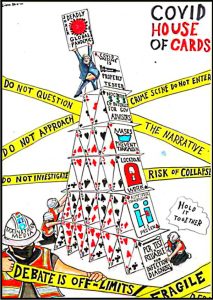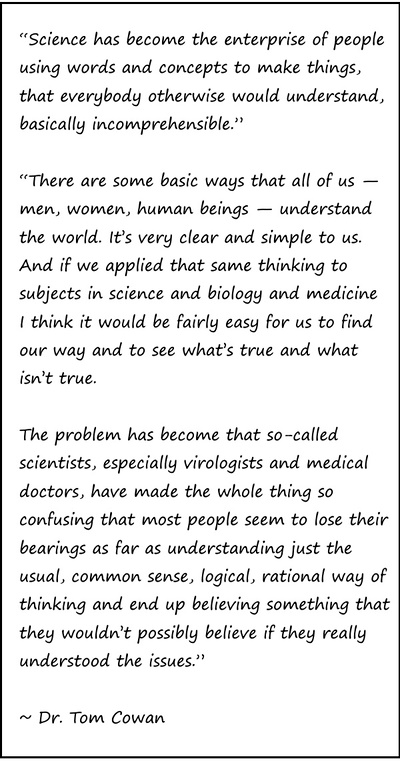
5G – From Blankets to Bullets
by Arthur Firstenberg
January 17, 2018
The single most important fact about 5G that nobody is talking about is called “phased array.” It will totally change the way cell towers and cell phones are constructed and will transform the blanket of radiation which has enveloped our world for two decades into a million powerful beams whizzing by us at all times. Blake Levitt, author of Electromagnetic Fields: A Consumer’s Guide to the Issues and How to Protect Ourselves (Harcourt Brace, 1995), brought this to my attention. A mutual friend, with whom I was speaking during the campaign to defeat S.B. 649 in California, passed on a message from Blake: “5G antennas will be phased arrays; Arthur will know what that means.” And I did.
Phased arrays were one of the first things I learned about in the very beginning of my long, involuntary journey from medical student to campaigner against wireless technology. After I was injured by X-rays in 1980, I began to read everything I could get my hands on that had to do with electromagnetic radiation and its effects on life. And one of the first books I read was Paul Brodeur’s The Zapping of America (W.W. Norton, 1977).
Early warnings
Brodeur was a staff writer for the New Yorker who had purchased property on Cape Cod, Massachusetts, only to discover that 30 miles inland, across the bay from his future home, the Air Force was planning to construct the world’s most powerful radar station. It was going to scan the Atlantic Ocean as a key early warning element protecting us against the threat of sea-launched ballistic missiles from the Soviet Union. Although it emitted an average power of only 145,000 watts, similar to some FM radio stations, it did not broadcast that energy from only a single antenna and it did not spread that energy out uniformly in all directions. Instead, it had 3,600 antennas arranged in two “phased arrays” of 1,800 antennas each. The antennas in each array worked together as a unit to focus all their energy into a narrow, steerable beam. Each beam had an effective power of four billion watts, and the peak radiation level exceeded one milliwatt per square centimeter—the FCC’s safety limit today—at a distance of three miles in front of the radar station. The facility was called PAVE PAWS (Precision Acquisition of Vehicle Entry Phased Array Warning System).
The Defense Department acknowledged in a 1975 report, quoted by Brodeur, that such systems “energize thousands of operational elements, are electronically steered at high search rates, and operate at a frequency range having a maximum whole body energy transfer to man and for which little bioeffects data exists.”[1]
Shortly after I read this, I discovered firsthand what some of the bioeffects were. Attempting to finish my M.D. almost cost me my life. I collapsed one day with all the symptoms of a heart attack, whereupon I resigned from school and moved up to Mendocino to recover. There I was in the path of the other PAVE PAWS, the one that scanned the Pacific Ocean. This PAVE PAWS was due east of Mendocino, in California’s Central Valley at Beale Air Force Base. And for nine months, every evening at precisely 7:00 p.m., no matter where I was or what I was doing, my chest would tighten and I would be unable to catch my breath for the next two hours. At precisely 9:00 p.m., my body would relax and I could breathe. I lived in Mendocino from 1982 through 1984, and although I eventually recovered my health, I was always aware of an uncomfortable pressure in my chest whenever I was on the coast. I also lived in Mendocino from 1999 to 2004, and felt that same discomfort whenever I was there, and always felt it suddenly vanish when I drove out of range of PAVE PAWS, and suddenly return at the same point on my journey home.
Directed beams
5G is going to be at a much higher frequency range, which means the antennas are going to be much smaller—small enough to fit inside a smartphone—but like in PAVE PAWS they are going to work together in a phased array, and like in PAVE PAWS they are going to concentrate their energy in narrow, steerable high power beams.[2] The arrays are going to track each other, so that wherever you are, a beam from your smartphone is going to be aimed directly at the base station (cell tower), and a beam from the base station is going to be aimed directly at you. If you walk between someone’s phone and the base station, both beams will go right through your body. The beam from the tower will hit you even if you are in the general vicinity of someone who is on a smart phone. And if you are in a crowd, multiple beams will overlap and be unavoidable.
At present, smartphones emit a maximum of about two watts, and usually operate at a power of less than a watt. That will still be true of 5G phones, however inside a 5G phone there may be 8 tiny arrays of 16 tiny antennas each,[3] all working together to track the nearest cell tower and aim a narrowly focused beam at it. The FCC has recently adopted rules[4] allowing the effective power of those beams to be as much as 20 watts. Now if a handheld smartphone sent a 20-watt beam through your body, it would far exceed the exposure limit set by the FCC. What the FCC is counting on is that there is going to be a metal shield between the display side of a 5G phone and the side with all the circuitry and antennas. That shield will be there to protect the circuitry from electronic interference that would otherwise be caused by the display and make the phone useless. But it will also function to keep most of the radiation from traveling directly into your head or body, [5] and therefore the FCC is allowing 5G phones to come to market that will have an effective radiated power that is ten times as high as for 4G phones. What this will do to the user’s hands, the FCC does not say. And who is going to make sure that when you stick a phone in your pocket, the correct side is facing your body? And who is going to protect all the bystanders from radiation that is coming in their direction that is ten times as strong as it used to be?
And what about all the other 5G equipment that is going to be installed in all your computers, appliances, and automobiles? The FCC calls handheld phones “mobile stations.” Transmitters in cars are also “mobile stations.” But the FCC has also issued rules for what it calls ”transportable stations,” which it defines as transmitting equipment that is used in stationary locations and not in motion, such as local hubs for wireless broadband in your home or business.[6] The FCC’s new rules allow an effective radiated power of 300 watts for such equipment.[7]
Enormous power
The situation with cell towers is, if anything, worse. So far the FCC has approved bands of frequencies around 24 GHz, 28 GHz, 38 GHz, 39 GHz, and 48 GHz for use in 5G stations, and is proposing to add 32 GHz, 42 GHz, 50 GHz, 71-76 GHz, 81-86 GHz, and above 95 GHz to the soup.[8] These have tiny wavelengths and require tiny antennas. At 50 GHz, an array of 1,024 antennas will measure only 4 inches square.[9] And the maximum radiated power per array will probably not be that large—tens or hundreds of watts. But just as with PAVE PAWS, arrays containing such large numbers of antennas will be able to channel the energy into highly focused beams, and the effective radiated power will be enormous. The rules adopted by the FCC allow a 5G base station operating in the millimeter range to emit an effective radiated power of up to 30,000 watts per 100 MHz of spectrum.[10] And when you consider that some of the frequency bands the FCC is making available will allow telecom companies to buy up to 3 GHz of contiguous spectrum at auction, they will legally be allowed to emit an effective radiated power of up to 900,000 watts if they own that much spectrum. The base stations emitting power like that will be located on the sidewalk. They will be small rectangular structures mounted on top of utility poles.
The reason the companies want so much power is because millimeter waves are easily blocked by objects and walls and require tremendous power to penetrate inside buildings and communicate with all the devices that we own that are going to part of the Internet of Things. The reason such tiny wavelengths are required is because of the need for an enormous amount of bandwidth—a hundred times as much bandwidth as we formerly used—in order to have smart homes, smart businesses, smart cars, and smart cities, i.e. in order to connect so many of our possessions, big and small, to the internet, and make them do everything we want them to do as fast as we want them to do it. The higher the frequency, the greater the bandwidth—but the smaller the waves. Base stations have to be very close together—100 meters apart in cities—and they have to blast out their signals in order to get them inside homes and buildings. And the only way to do this economically is with phased arrays and focused beams that are aimed directly at their targets. What happens to birds that fly through the beams, the FCC does not say. What happens to workers who climb utility poles? A 30,000-watt beam will cook an egg, or an eye, at a distance of a few feet.
And the power from a base station will be distributed among as many devices as are connected at the same time.[11] When a lot of people are using their phones simultaneously, everyone’s phone will slow down but also the amount of radiation in each beam will be less. When you are the only person using your phone—for example, late at night—your data speed will be blisteringly fast but most of the radiation from the cell tower will be aimed at you.
Deep penetration into the body
Another important fact about radiation from phased array antennas is this: it penetrates much deeper into the human body and the assumptions that the FCC’s exposure limits are based on do not apply. This was brought to everyone’s attention by Dr. Richard Albanese of Brooks Air Force Base in connection with PAVE PAWS and was reported on in Microwave News in 2002.[12] When an ordinary electromagnetic field enters the body, it causes charges to move and currents to flow. But when extremely short electromagnetic pulses enter the body, something else happens: the moving charges themselves become little antennas that re-radiate the electromagnetic field and send it deeper into the body. These re-radiated waves are called Brillouin precursors.[13] They become significant when either the power or the phase of the waves changes rapidly enough.[14] 5G will probably satisfy both requirements. This means that the reassurance we are being given—that these millimeter waves are too short to penetrate far into the body—is not true.
In the United States, AT&T, Verizon, Sprint, and T-Mobile are all competing to have 5G towers, phones, and other devices commercially available as early as the end of 2018. AT&T already has experimental licenses and has been testing 5G-type base stations and user equipment at millimeter wave frequencies in Middletown, New Jersey; Waco, Austin, Dallas, Plano, and Grapevine, Texas; Kalamazoo, Michigan; and South Bend, Indiana. Verizon has experimental licenses and has been conducting trials in Houston, Euless, and Cypress, Texas; South Plainfield and Bernardsville, New Jersey; Arlington, Chantilly, Falls Church, and Bailey’s Crossroads, Virginia; Washington, DC; Ann Arbor, Michigan; Brockton and Natick, Massachusetts; Atlanta; and Sacramento. Sprint has experimental licenses in Bridgewater, New Brunswick, and South Plainfield, New Jersey; and San Diego. T-Mobile has experimental licenses in Bellevue and Bothell, Washington; and San Francisco.
International Appeal
Stop 5G on Earth and in Space
5G—the 5th generation of wireless technology—must not be built on Earth or in Space. The notion that radio frequency radiation, commonly known as radio waves, is somehow not real radiation and is harmless, was disproven by the 1970s in laboratories all over the world, and the harm to humans, animals and plants has since been confirmed in over 10,000 peer-reviewed studies. If 5G is built, radiation levels will increase 10- to 100-fold, virtually overnight, everywhere. There will literally be no place on Earth to hide from it.
The effects of levels of radio frequency radiation already existing now on the health of the population and the environment, as reflected in quality of life; high rates of cancer, neurological disease, heart disease and diabetes, even in children; plummeting populations of birds, bees and butterflies; and unhealthy forests, can be seen and felt everywhere.
Sign the Appeal and join the scientists, doctors and environmental organizations from every continent who have been working tirelessly for many years to call the world’s attention to an invisible assault on our biosphere.
Governments and the public are urged to read the Appeal carefully, and to act accordingly.
[1] The Zapping of America, p. 243.
[2] W. Hong et al., “Multibeam Antenna Technologies for 5G Wireless Communications,” IEEE Transactions on Antennas and Propagation 65(12): 6231-6249 (2017).
[3] Y. Huo and W. Xu, “5G Cellular User Equipment: From Theory to Practical Hardware Design,” arXiv:1704.02540v3 (2017), Fig. 11.
[4] 47 CFR § 30.202(b)
[5] Huo and Xu, p. 4 and Fig. 4.
[6] In the Matter of Use of Spectrum Bands Above 24 GHz for Mobile Radio Services, Report and Order, FCC 16-89, ¶¶ 285-287 (2016) (“First Report and Order”).
[7] 47 CFR § 30.202(c)
[8] First Report and Order, FCC 16-89 (2016); Second Report and Order, FCC 17-152 (2017).
[9] Huo and Xu, p. 12 and Fig. 7(a).
[10] 47 CFR § 30.202(a)
[11] Reply Comments of Nokia to FCC’s Notice of Proposed Rulemaking (Feb. 26, 2016, Appendix).
[12] Microwave News 22(2): 1, 10-12.
[13] R. Albanese et al., “Ultrashort Electromagnetic Signals: Biophysical Questions, Safety Issues and Medical Opportunities,” Aviation, Space, and Environmental Medicine, May 1994, pp. A116-A120.
[14] B. Macke and B. Ségard, “Simple Asymptotic Forms for Sommerfeld and Brillouin Precursors,” arXiv:1203.4461v2 (2018).

Truth Comes to Light highlights writers and video creators who ask the difficult questions while sharing their unique insights and visions.
Everything posted on this site is done in the spirit of conversation. Please do your own research and trust yourself when reading and giving consideration to anything that appears here or anywhere else.










